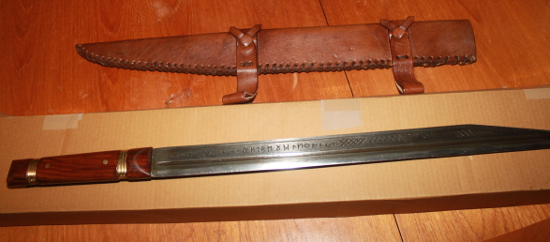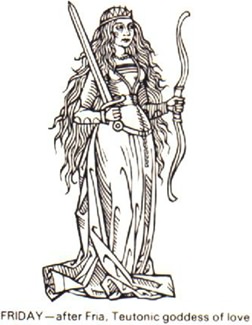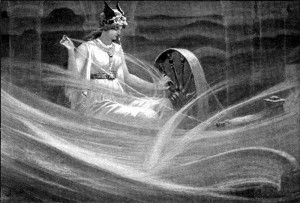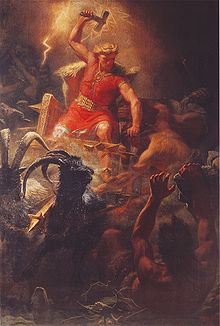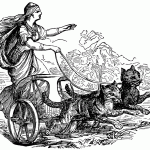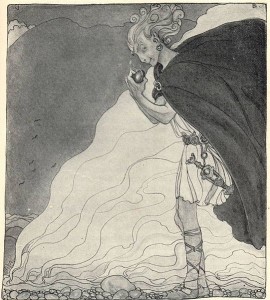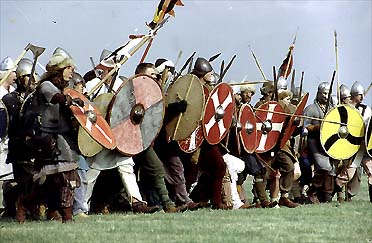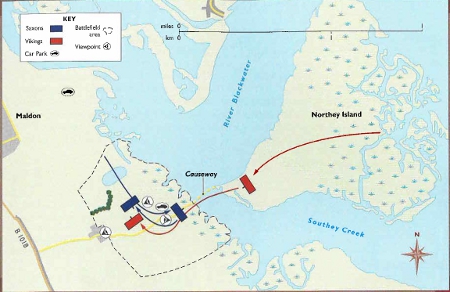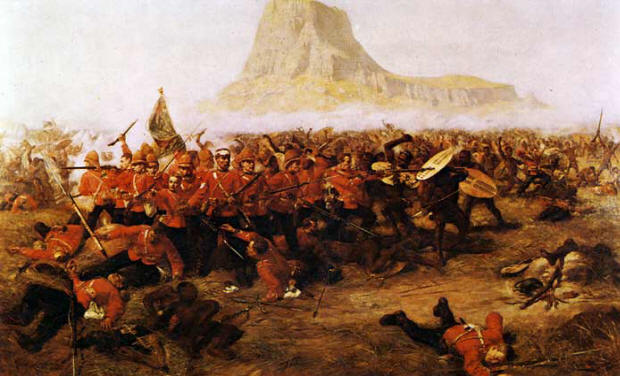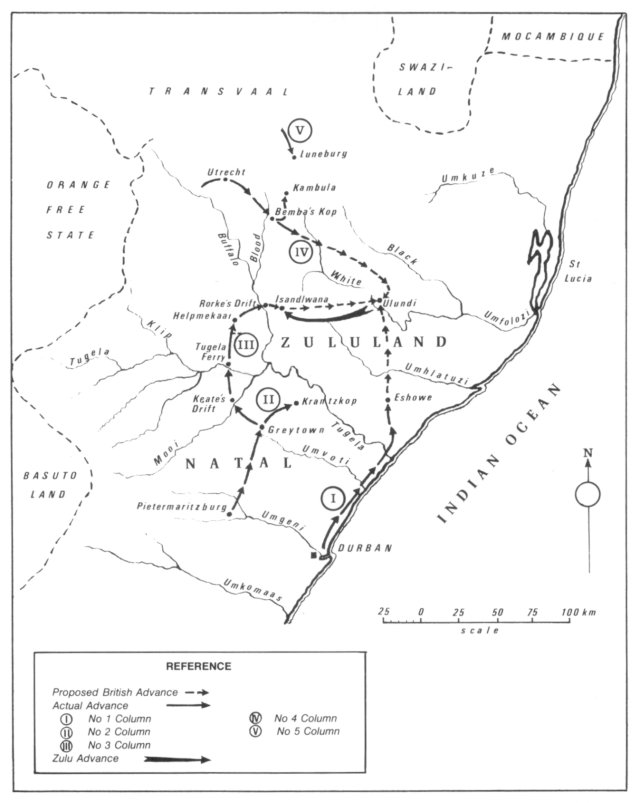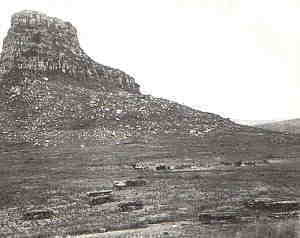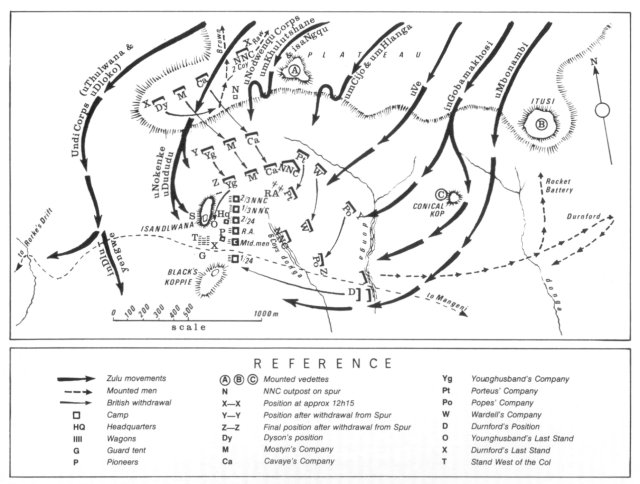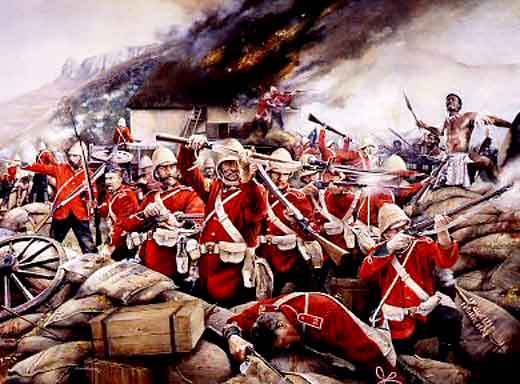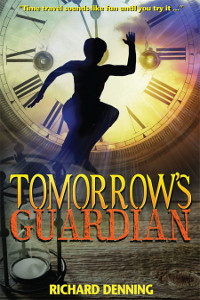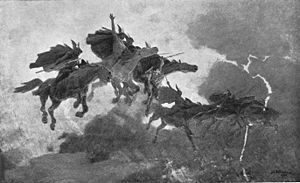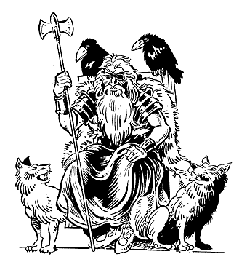My mother probably thought I was mad when I asked for it but I was delighted with a present my parents bought me this Xmas. It is a replica of the Beagnoth Seax which is in the British Museum.
Here is a picture of it:
The Seax of Beagnoth was found in the river Thames in 1857 and dates to 9th century. Inscribed upon it is a complete 28 character set of the FUTHORC or old English runic alphabet. It also contains a name. This might either be the blades owner or its maker. This is an image of the original:
The Beagnoth Seax in the British Museum
I sometimes do talks at schools and Historical Societies on Life in AD 600 and use many such artefacts to illustrate points. In the case of the Beagnoth Seax I can show my audience some of the evidence for how we know the Anglo-Saxons used the Germanic-Norse style runic alphabet.
Furthermore the Beagnoth Seax is evidence that the Saxons were following traditions for inscribing blades to make them more powerful and invincible. Such an activity is mentioned in the Beowulf Saga:
On its bright gold facings there were also runes
set down in order, engraved, inlaid,
which told for whom the sword was first worked,
its hair-keen edges, twisted gold
scrolled in the hilt, the woven snake-blade.
In pure gold inlay on the sword-guards
there were rune-markings correctly incised.
In Norse poetry of the Edda there are clear instructions about inscribing victory runes on a blade:
Winning-runes learn,if thou longest to win,And the runes on thy sword-hilt write;Some on the furrow,and some on the flat,And twice shalt thou call on Tyr.
What this is saying is to write the runes on the blade and in particular to use the Tyr rune. Tyr is the one handed god of Warriors and courage.
The great thing about being able to share with an audience a physical object like a blade is to show that our ancestors did this kind of thing in real life.
Who Beagnoth was we do not know (although the name appears twice in documents from Kent in the 9th/10th centuries) but it is thanks to his seax being dropped in the river Thames that we have this evidence today,

